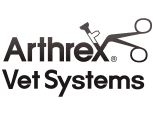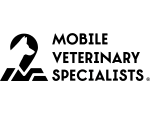Osteoarthritis (OA) is the inflammation and ultimate breakdown of the primary components of the joint, including cartilage, joint capsule, and underlying/surrounding bone. Inflammation in the joint causes damage and ultimately erosion of the protective layer of cartilage in the joint. The underlying bone is exposed as cartilage is worn away, resulting in a lack of shock absorption in the joint. The inner lining of the joint capsule surrounding the joint responds by inflammation in the form of synovitis and, ultimately, fibrosis (scarring). The joint capsule lining produces the joint fluid that lubricates the joint and keeps the cartilage, ligaments, and structures within the joint healthy. As the joint capsule becomes inflamed and fibrotic, it causes the joint fluid to become thin and watery, providing less lubrication and cushion for the joint. Pain from osteoarthritis is linked to cartilage damage, bone exposure, friction, bony change, and inflammation within the joint.
The most common cause of OA in canine patients is secondary to orthopedic diseases, such as cranial cruciate ligament rupture, osteochondrosis, or trauma. In other canine patients, there is no inciting cause, and OA develops due to daily wear and tear on the joint.
Commonly affected joints:
- Hips
- Tarsus (ankle)
- Elbows
- Shoulders
- Stifles (knee)
- Carpi (wrists)
Young large breed dogs with developmental bone disease and older, overweight large breed dogs are commonly affected by OA.
Clinical Signs
- Stiff hind limb/front limb gait
- Waddle or truncal sway
- Bunny hopping
- Unwilling or unable to jump up on furniture/into the car
- Limping
- Sits with leg straight or on one hip
- Difficulty rising from lying down
- Decreased activity
Risk Factors
- Genetic Predisposition – There are no genetic factors in canine patients that have been shown to be associated with the onset of osteoarthritis. There is a belief that developmental bone diseases like osteochondrosis, elbow dysplasia, and hip dysplasia have genetic risk factors.
- Age – As dogs age the cartilage in joints changes composition and is less able to repair areas of damage resulting in cartilage breakdown and inflammation.
- Obesity – Being overweight or obese has been linked to the worsening of osteoarthritis in animals and humans. Diet restriction in dogs has been shown to decrease the incidence of osteoarthritis in the hips, elbow joints, and shoulder joints. In humans, obesity has been linked to increased load on the joint and altered alignment, resulting in more joint damage and breakdown.
- Gender – An association of osteoarthritis with gender has not been studied in the canine patient. Early spay or neutering has been shown to increase the incidence of developmental bone disease, resulting in the early onset of osteoarthritis.
- Housing – Puppies on slippery surfaces during development have a higher incidence of hip dysplasia and osteoarthritis.
- Diets – Diets high in fat and protein during development have been identified as a risk factor for elbow osteoarthritis.
- Injury or trauma – Injury to a joint causes joint damage and early onset of osteoarthritis. Types of injuries could include fractures, luxations (dislocations), and cruciate tears in stifles (knees).
- Developmental bone diseases – Developmental diseases that cause abnormal weight distribution in joints, such as elbow dysplasia, or an abnormal joint surface, such as osteochondrosis, will predispose the joint to early development of osteoarthritis.
Orthopedic exam
- Examination of the bones and joints will often result in pain on manipulation of the joints, grinding of the joint during range of motion, limited range of motion in joints, and swelling of the joints. Patients will often limp or have a stiff gait.
Radiographs (x-rays)
- Radiographic changes are apparent in up to 90% of cats, but only 50% will be clinically affected by their osteoarthritis.
- Radiographs of a joint with osteoarthritis can show:
- Osteophytes – bony outgrowths around the joint associated with cartilage breakdown
- Enthesiophytes – mineralization where ligaments attach to the bones
- Effusion – fluid or swelling in the joint
- Soft tissue swelling
- Subchondral sclerosis – Increased mineralization of the bone around the joint due to exposure and overload
- Mineral inside the joint
- Bone cysts
Joint fluid analysis
- Joint fluid from a joint with osteoarthritis will show an increase in white blood cells called monocytes.
Other imaging modalities
- MRI -Evaluates soft tissues like ligaments, tendons, and joint capsules. Limited in the ability to evaluate cartilage.
- CT – Evaluates bone structures within the joint.
- Scintigraphy – This imaging uses a marker that binds to hydroxyapatite in bone and can target areas of the skeleton that have high bone turnover (breakdown and remodeling) but is not specific for arthritis.
- Arthroscopy – This involves using a camera within the joint to evaluate the joint surface. This is the gold standard for cartilage evaluation.
Treatment recommendations for OA are multimodal, which means they include different approaches and can be either conservative, surgical, or a combination of both. All treatment decisions are made based on individual patients and in discussion with the animal owner and surgeon.
- Weight control. A slender body weight is by far the most critical aspect of OA management. Fat produces inflammatory mediators that perpetuate the inflammation process, and increased body weight puts additional force on the joints, causing pronounced OA changes and can ultimately be painful with limited mobility.
- Activity modification. High-impact activities such as running or jumping should be limited as they can cause more inflammation and pain. These activities should be replaced with more controlled activities like leash walks. Low impact consistent exercise is good to help build the muscles around the joints and will eventually promote joint stability.
- Rehabilitation. Animal rehabilitation such as range of motion exercises, therapeutic exercises, and aqua therapy (underwater treadmill, swimming) help to improve joint mobility, increase muscle mass, and improve exercise endurance. Acupuncture, LASER therapy, and other rehabilitation modalities are commonly recommended, although there is an overall lack of studies to prove their benefit.
- Pain control. Nonsteroidal anti-inflammatory drugs (carprofen, meloxicam, deracoxib, ketoprofen, etc.) are the most commonly used medication for OA pain control. In patients that cannot tolerate nonsteroidal anti-inflammatory drugs, adjunctive pain medications (amantadine, gabapentin, tramadol, codeine, corticosteroids, acetaminophen, acupuncture) can be considered, although there is an overall lack of studies supporting their efficacy for OA pain management.
- Joint supplements. The exact mechanism of how joint supplements may help alleviate OA pain is poorly understood. Chondroitin sulfate, glucosamine sulfate, and omega-3-fatty-acid supplementation are the most commonly recommended joint supplements.
- Intra-articular (joint) injections. Substances such as hyaluronic acid, platelet-rich plasma, steroids, and osteo-cushion technology (Spryng) can be injected into the joint to decrease inflammation, increase healing, or provide a physical cushion for the joint. Efficacy of these treatments require further investigation.
- Disease modulating agents. Injectable supplements such as polysulfated glycosaminoglycan (PSGAG) are used to help with repair of the joint and decrease inflammation associated with osteoarthritis. More research is necessary to ascertain the benefit of disease-modulating agents.
- Immunomodulation. Bendivetmab (Librela) is a monoclonal antibody (specific canine protein) that targets and binds to the Nerve Growth Factor (NGF), thereby decreasing pain associated with osteoarthritis. Librela is administered once a month as an injection.
- Surgical management. Severe cases of osteoarthritis that compromise the quality of life can require surgical intervention. The surgeries that would be performed are either treatment of the primary cause, such as suture-based or osteotomy-based techniques for knee cranial cruciate ligament rupture or salvage procedure to remove the painful joint components, such as femoral head and neck excision (FHNE), arthrodesis (fusion of joints), total joint replacement surgery (most commonly in hips, stifles, elbows).
Appropriate management of osteoarthritis or its primary cause can result in a good quality of life. Medical management will allow most dogs to live a long and active life, whereas surgical management could be curative. Discussing treatment options with your veterinarian or a surgeon can greatly improve the canine’s comfort level and quality of life.













